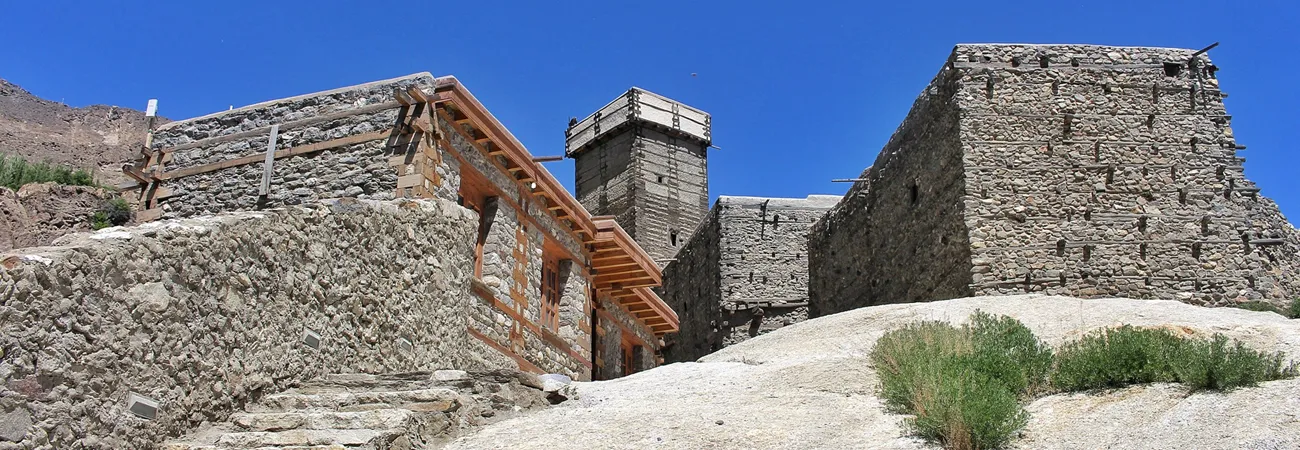i ECONOMY
Properly showcasing of Pakistan’s archaeological assets in the Gilgit-Baltistan (GB) province can significantly increase the tourist footfall. Once the pivot of multiple civilizations, GB needs their proper survey, documentation, and conservation, opined Deputy Director Tourism, GB (Islamabad office) Sajid Hussain, while talking to WealthPK. “Besides the high altitudes and scenic places, GB is rich in historic assets of both tangible and intangible types – folklore, saga, dialects, constructions, inscriptions, antiquities, historic places, and other tourist attractions. The tourism and archaeology departments have done a great deal of work related to the survey, documenting, and conserving the historic assets here. Yet it is not completed, as new sites and places continue to be discovered. However, the mutual coordination of both departments will better facilitate saving more sights and related assets,” he said. Talking to WealthPK, Deputy Director of Tourism, Baltistan, Rahat Karim Baig, said by showcasing the rich cultural heritage and archaeological sites, tourist activities in Gilgit-Baltistan could be enhanced.
It is a legacy, to be conserved after proper investigation and documentation. He said the archaeology department had already performed well in documenting and preserving the historic assets here, and the tourism department also coordinated with it. He said foreign tourists mostly visit Altit Fort, Baltit Fort, especially the Karakoram Highway, to view archaeological sites/rock arts – Karga Budha site (Gilgit); Manthal rock art (Skardu), Lamsa Budha site (Shigar); Hanzal stupa (Gilgit), Fugush monastery (Diamer), rock carvings and inscriptions (Hunza). But still more archaeological sites are discovered after further excavation, and their recording is onboard. “For better presentation of heritage, sites and sagas, virtual tours are a modern concept to bring remote people to your stage. It must be focussed on, as it is becoming a hot trend globally. Many countries are presenting virtual tours and earning handsomely. By doing so, not only tourism will flourish here, but it will benefit the state coffers as well.”
Sharing with WealthPK views about the need for survey and documentation of archaeological places, Dr Zakir Hussain Zakir, Head of the Department of Archaeology and Heritage Studies at the University of Baltistan, Skardu (UOBS), said, “This region was once the junction of civilizations. In bygone days, the Silk Route and Apricot Route (A past route from Skardu to Kashgar and Yarkand but abandoned in the late 18th century) were trodden by several tourists, traders, invaders, kings, and wanderers. They all left their impressions in different forms – constructions, inscriptions, scriptures, carvings, and cultural values.” He said proper introduction of these assets to the outer world could only be done through proper recording, starting with surveys and investigations – the early stages of proper documentation. The whole region is full of prehistoric rock carvings, from the Neolithic age to the modern age.
A lot of traces and symbols are discovered here, belonging to Zoroastrian, Jainism, Shamanism, Buddhism, and Bonism (Baltistan or western Tibet is the place of its origin, rarely described in the literature), mythological Caesarism, Judaism, and Christianity. Chilas and Diamer are rich in these carvings. “Owing to the construction of dam in Diamer, some archaeological spots (carved rocks) are going to be submerged. To save these assets digitally and preserve them underwater, the UOBS is working with German experts. With their coordination, after a detailed underwater archaeological survey, a glass shield will be fixed around the boulders to avoid erosion and further submersion. Anyone can watch them by diving.” He suggested that modern archaeological survey techniques should be introduced in Pakistan through digital cameras, photogrammetry, and laser scanning.
Credit: Independent News Pakistan (INP)









